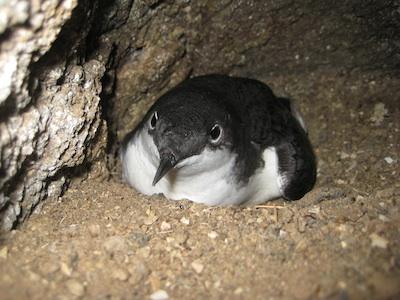A 10-year effort to remove non-native black rats from Anacapa Island, part of Channel Islands National Park, has produced incredible results, with rare seabirds returning to the island to nest.
According to the National Park Service, Ashy storm-petrels are nesting on the island for the first time ever recorded and Cassin's auklets have expanded their territories in the absence of rats as predators. Significantly, the number of Scripps's murrelets nests has quadrupled with a 50 percent increase of eggs hatched.
Rats are known to have negative impacts to island ecosystems. Rats are the most significant cause of bird extinctions on islands and are estimated to be responsible for half of bird and reptile extinctions worldwide.
Nonnative black rats, which were first reported on Anacapa Island in the early 1900s, threatened critical breeding habitat for these rare seabirds. They were eating approximately 70 percent of the eggs of the once common Scripps's murrelet, a state-listed threatened species. They also preyed upon native deer mice, reptiles, insects, intertidal invertebrates, and plants.
To restore balance to the island ecosystem, black rats were removed in 2001 and 2002 using an aerial application of rodenticide bait. Some of the world's leading island experts and scientists from the United States, Canada, and New Zealand assisted project partners from Channel Islands National Park, Island Conservation, and the American Trader Trustee Council (comprised of the California Department of Fish and Wildlife, U.S. Fish and Wildlife Service, and the National Oceanic and Atmospheric Administration) in the rigorous planning process for this project.
Island Conservation North America Regional Director Gregg Howald said, "Nowhere are the threats of extinction higher than on islands, and nowhere do we have greater opportunities to save species at risk. This successful project demonstrates the value of this critical conservation tool for other islands around the globe."
"The Anacapa rat eradication is part of a larger effort to protect and restore biological diversity on the Channel Islands. On Anacapa, ongoing efforts to remove nonnative iceplant and restore native plant communities are important to this recovery," said Channel Islands Superintendent Russell Galipeau.
Scientists from the National Park Service, University of California at Santa Cruz, California Institute of Environmental Studies, and Partnership for Interdisciplinary Studies of Coastal Oceans and Island Conservation will publish a report on the results of this noteworthy conservation effort later this year.




Add comment